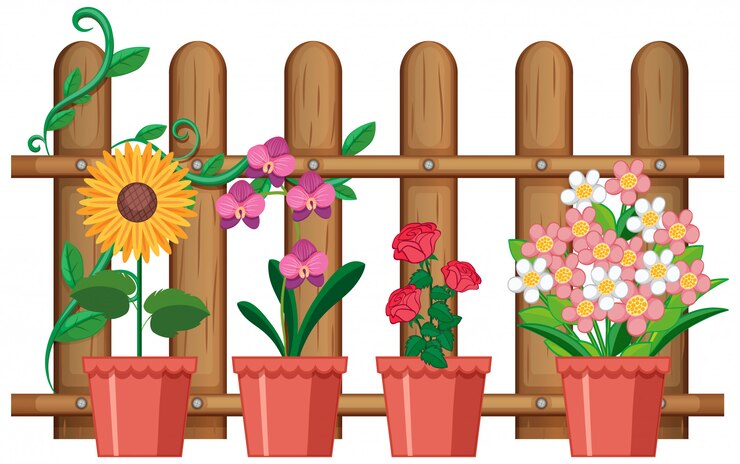In the realm of classic American homes and quaint neighborhoods, few things evoke a sense of charm and nostalgia quite like the picket fence. These iconic fences have been a staple of residential architecture for centuries, offering not only a boundary for properties but also a touch of elegance and warmth to the landscape. From their historical significance to their enduring popularity in modern times, picket fences have a story to tell that spans generations.
The History of Picket Fences
The origins of picket fences can be traced back to colonial America, where they were used primarily for practical purposes rather than aesthetic appeal. Early settlers constructed fences using whatever materials were readily available, such as wood or even branches. These fences served as boundaries to keep livestock in and potential threats out, marking the beginning of what would evolve into the iconic picket fence we know today.
As time passed, picket fences became more refined and decorative, reflecting changing architectural styles and societal preferences. By the 19th century, picket fences had gained popularity in suburban areas, where they were often painted white to symbolize purity and prosperity. The image of a white picket fence surrounding a charming cottage became synonymous with the American dream, embodying ideals of home, family, and community.
Characteristics of Picket Fences
Picket fences are characterized by their distinctive design, featuring evenly spaced vertical boards (pickets) attached to horizontal rails. The pickets can vary in height and style, with popular choices including pointed, rounded, or decorative tops. Traditionally made of wood, picket fences are now available in a variety of materials, including vinyl, aluminum, and composite materials, offering durability and low maintenance options for homeowners.
One of the defining features of picket fences is their open design, which allows for visibility and airflow while still providing a sense of enclosure. This makes them ideal for delineating property lines without creating a visual barrier, enhancing the curb appeal of homes and creating a welcoming atmosphere for passersby.
Benefits of Picket Fences
Picket fences offer a range of practical and aesthetic benefits that have contributed to their enduring popularity among homeowners:
- Enhanced Curb Appeal: Picket fences add a touch of charm and character to any property, instantly elevating its visual appeal and creating a warm and inviting atmosphere.
- Property Boundary: Picket fences provide a clear demarcation of property lines, helping to define outdoor spaces while maintaining an open and welcoming feel.
- Security and Safety: While not as imposing as solid fences, picket fences still offer a level of security by acting as a deterrent to unwanted visitors and keeping pets and children safely contained within the yard.
- Versatility: Picket fences come in various styles, heights, and materials, making them versatile and adaptable to different architectural designs and landscaping preferences.
- Low Maintenance: Modern materials such as vinyl and aluminum require minimal upkeep, saving homeowners time and effort in maintaining their fences.
Installation and Maintenance Tips
Installing a picket fence requires careful planning and attention to detail to ensure a sturdy and visually appealing result. Here are some tips to consider when installing and maintaining a picket fence:
- Proper Planning: Start by determining the layout and dimensions of your fence, including the type of material, height, and style that best complement your home and landscaping.
- Site Preparation: Clear the area where the fence will be installed, ensuring that the ground is level and free of obstructions or debris that could interfere with the installation.
- Secure Installation: Follow manufacturer instructions or consult with a professional to ensure that the fence is installed correctly and securely, using the appropriate tools and techniques for the material chosen.
- Regular Maintenance: To keep your picket fence looking its best, perform routine maintenance tasks such as cleaning, painting, and repairing any damaged or loose pickets or rails.
- Protection: Apply a protective sealant or coating to wooden fences to prevent rot, decay, and termite damage, extending the lifespan of your fence.
Modern Trends and Design Ideas
While the classic white picket fence remains a timeless choice for many homeowners, modern trends have expanded the design possibilities for picket fences. Some popular variations and design ideas include:
- Colorful Accents: Experiment with bold or subtle colors to add a pop of personality to your picket fence, creating a unique and eye-catching look.
- Mixed Materials: Combine different materials such as wood and metal for a contemporary twist on traditional picket fence design, adding texture and visual interest to your outdoor space.
- Arbors and Gates: Incorporate decorative arbors and stylish gates into your picket fence design to create a grand entrance and enhance the overall aesthetics of your property.
- Vertical Gardens: Utilize the open design of picket fences to create vertical gardens or trellises, adding greenery and natural beauty to your fencing while maximizing space.
- Custom Details: Personalize your picket fence with custom details such as ornamental finials, scalloped edges, or lattice panels, reflecting your individual style and taste.
Conclusion
In conclusion, picket fences embody a rich history and enduring appeal that transcends time and trends. From their humble beginnings as practical barriers to their status as iconic symbols of hearth and home, picket fences continue to captivate and inspire homeowners with their charm and versatility. Whether framing a picturesque cottage or enhancing a modern landscape, a picket fence represents more than just a boundary—it represents a legacy of tradition, craftsmanship, and the enduring pursuit of the American dream.


